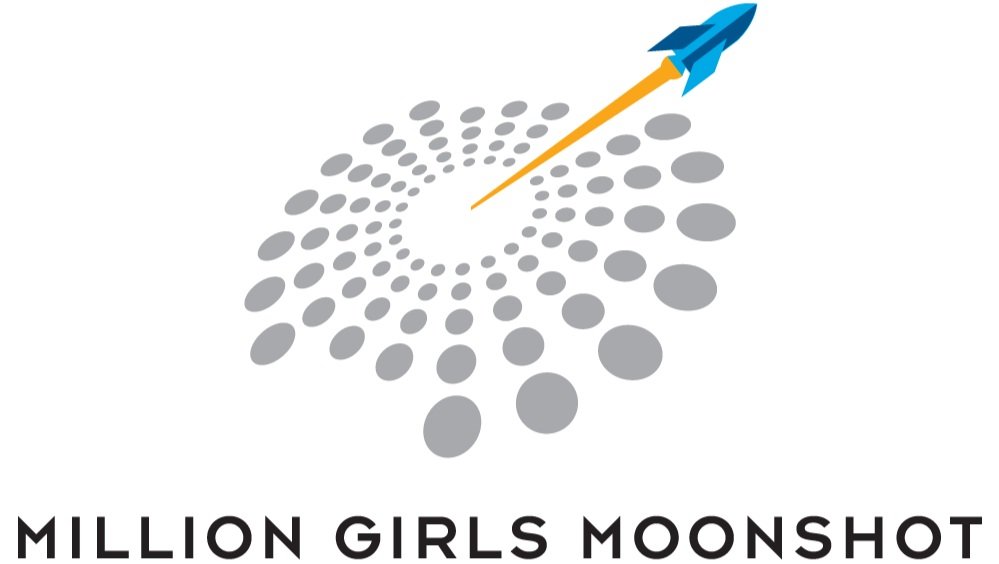Celebrating Women Engineers: A Special Look at Some of Lockheed Martin’s Top Talent
Reimagining who can engineer, build and make the future is a challenge Million Girls Moonshot takes seriously.
Despite making gains since 1970, merely 15% of U.S. engineers are women. In fact, women overall comprise almost half of the American workforce, yet account for only 27% of the STEM workforce.
Engineering the solutions for a better tomorrow requires a diversity of thought. Simply said, we need more women at the table.
Our Moonshot partner, Lockheed Martin, shares this vision by recognizing the contributions of women in STEM and supporting the mission of cultivating girls and young women who will engineer a better future.
‘Women in Engineering Day’ is a growing movement to inspire more girls' to pursue engineering for a better world.
Moonshot has teamed up with global aerospace and defense industry leader and funding partner, Lockheed Martin, to give us an insider’s peek with some of their most talented women engineers.
Let’s Get Inspired!
Dr. Clara Rivero-Baleine, Research Scientist and Lockheed Martin Associate Fellow. Dr. Rivero-Baleine fled Cuba for the United States at 16-years old, with her mother and brother. Her mother, a math teacher in Cuba, remains Rivero-Baleine’s hero to this day.
“My mom is my engineering hero. She was a Math teacher in Cuba, and gave up everything there so that my brother and I could have a future here in the U.S.
I am happy to say that my brother and I are both engineers.”
Knowing that her mother left everything behind in Cuba to give her and her brother more opportunities, Dr. Rivero-Baleine reflects on the 2022 theme of Engineering Week - Reimagining the Possible. In the next ten years, she reflects that our current day “impossibilities” will be possible.
“Traditional sensors are bulky and heavy and require multiple optical components to achieve good imagery.
Imagine replacing all of those components with a single flat metalens. This would significantly reduce the size, weight, power, and cost of our sensors. Metalenses are a new type of optical lenses, and customers like DARPA have been funding this research under the EXTREME and ENVision programs.
Our team in Applied Research has been working with university partners to make this possible.”
While Dr. Rivero-Baleine’s future engineering predictions might seem complex, she explains that the field of engineering is really quite simple to understand.
“Engineering is all about solving hard problems. Every day is different.
Some days it requires a lot of thinking and puzzle solving.
Other days you work on designing your component or experiment. Then you go to a lab and try it. It is very dynamic.”
Dr. Rivero-Baleine’s trust in the field has grounding in her favorite quote.
“Einstein said, ‘Imagination is more important than knowledge.’
Don’t think because it is not possible today, it won’t be possible tomorrow.
As technology changes, as new innovations happen, things that were not possible 10 years ago are possible today. The
Same will be true 10 years from now. So, “Reimagine the Possible” and dream big.”
Melissa Rhoads, PhD a Systems of Systems Technologies Director, Dr. Rhoads is empowered knowing that her work is positively impacting people’s daily lives.
“I love seeing what we develop to protect our national security. As a senior in college, I vividly remember the 9/11 terrorist attacks. I also have friends and family that are currently serving or have served in the military. It’s important to know that I can contribute to keeping them safe. There’s a strong and shared sense of purpose in this job that I value. From radar and sonar capabilities that monitor the sky and sea to protect our service members, to cutting edge technologies, like GPS, that can significantly enhance everyday life, working at Lockheed Martin has provided me an opportunity to learn and be challenged so that there’s rarely an average day, and there’s always a purpose.”
Melissa didn’t always know she wanted to be an engineer, in fact, she began by pursuing a veterinary career.
“I had always wanted to be a veterinarian, so I started undergrad in pre-med, but also took Engineering 101. Within the first week, I realized that much of biology/chemistry at that time was memorization, while engineering was learning and applying a concept or principle. That was the hook - I like understanding basic principles and applying them in new ways.”
Being “hooked” by real-world application and problem solving was only the start. Dr. Rhoads has many amazing experiences in her career as an engineer.
“It’s hard to pick one “cool experience,” but there was one event early in my career that really demonstrated the impact of what we do. I was working on a project to secure the U.S. Coast Guard’s communications capability (among other things), and the technology we delivered helped them catch a record number of drug-runners off the Florida coast. Within a year, we could see the impact of our work in supporting one of the U.S Coast Guard’s critical priorities.”
With such monumental experiences, it can be difficult to really understand what engineers like Dr. Rhoads do on a day-to-day basis. She shares that her job is really about problem-solving and applying an engineering mindset.
“I work with lots of very different, and very talented people to solve big problems. We experiment with what we know to find out what we don’t know…yet! It’s really important that we work together, because sometimes, we discover things separately, and when we bring our discoveries together – we can make engineering history.”
Million Girls Moonshot is grateful for the generous support of partners like Lockheed Martin whose contributions and insight into the field of engineering inspire and excite a generation of girls to solve real-world problems and reimagine the possible.


